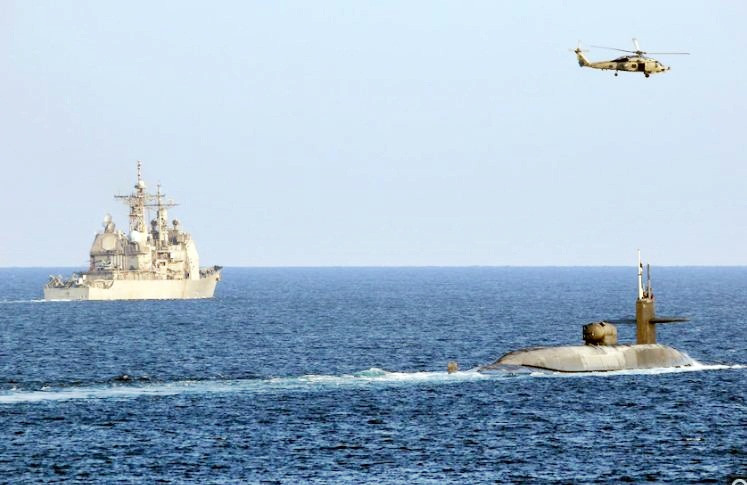The U.S. is bolstering its military presence in the eastern Mediterranean, moving forces closer to Israel and Lebanon in response to escalating cross-border fire. This strategic shift, involving the USS Wasp and its Amphibious Ready Group (ARG), underscores the increasing concern over potential conflict between Israel and Hezbollah.
The USS Wasp, accompanied by the 24th Marine Expeditionary Unit (MEU), entered the Mediterranean Sea on Wednesday as part of a "long-planned effort," according to a U.S. Navy statement. However, the current geopolitical tensions have prompted the U.S. to move these assets further east. Israeli officials have indicated readiness for "intense action" in southern Lebanon, heightening the need for U.S. deterrence and readiness measures in the region.
The State Department has repeatedly cautioned American citizens to "strongly reconsider travel" to Lebanon, emphasizing the volatile security environment. While no evacuation order has been issued, preparations for such a scenario are in place. The 24th MEU, based on the USS Wasp, is equipped for special operations and evacuation missions, adding a layer of preparedness should an extraction of U.S. nationals become necessary.
In 2006, during a similar conflict between Israel and Hezbollah, the State Department executed a non-combatant evacuation of approximately 15,000 Americans from Lebanon within two weeks. Drawing from this precedent, the current deployment aims to provide the U.S. with operational flexibility amid increasing hostilities.
The USS Wasp's ARG, which departed in early June, includes the amphibious transport dock ship USS New York and the dock landing ship USS Oak Hill. The Oak Hill has been operating in the Mediterranean since mid-June, and the New York will soon join its counterparts in the eastern Mediterranean.
While the move is framed as a deterrence measure, the presence of these naval assets also serves to stabilize the region. "This deployment is being done for deterrence purposes and to promote regional stability," stated a U.S. official.
Recent weeks have seen intensifying clashes between Israeli forces and Hezbollah along the Israel-Lebanon border, sparking fears of a broader conflict. Diplomatic efforts to de-escalate the situation have thus far been ineffective. Israeli Defense Minister Yoav Gallant has made clear Israel's stance against Hezbollah's military presence on its border, asserting, "We will not accept threats to our northern communities."
The strategic movement of U.S. forces also aligns with previous deployments in response to the October 7 attack by Hamas on Israel. The USS Bataan and the aircraft carrier USS Gerald Ford were earlier positioned to deter further regional escalation following the Hamas offensive.
The USS Wasp's current armament includes AV-8 Harrier jets and helicopters, though it lacks MV-22 Osprey aircraft, which are typically used for long-distance personnel transport. This configuration underscores the Wasp's primary role in immediate regional stability operations rather than evacuation.
The deployment provides U.S. leaders with a range of options amid the ongoing tensions. "The movement is intended to provide American leaders with options," another official noted, emphasizing the operational readiness of U.S. forces in the region.






